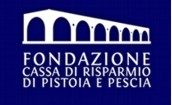About
The Archivio Capitolare, housed in the monumental complex of the Duomo of Pistoia, is a stratified and heterogeneous institution, with dual functions as both archive and library.
The historic seat of the Archive is found within the museum of the Duomo (on the first floor, when entering from via Sozomeno). Currently, it is used for storage and conservation of books—especially recent publications—pertaining to local scholarship and religious culture, the collections donated by the priest don Severino Tofani and Ms. Giulia Landini (who inherited the library of her uncle, canon Antonio Dal Pino), numerous ecclesiastical journals, a rich collection of liturgical books printed before the council of Vatican II, the modern archive (19th and 20th century) of the Duomo’s parish (closed in 1984), and the extensive series of registers listing masses celebrated in the Duomo from 1575 until the present day, as well as more recent registers pertaining to the administration of the cathedral and its institutions (20th century).
The entrance to the current seat of the Archivio Capitolare, inaugurated in 1974, is found on the floor above. Opening out onto the ancient canonic cloister, this space consists of five rooms, including a large reading room decorated with frescos featuring tapestry motifs that date from circa 1280. The Archive conserves documentary collections attesting the history of the various institutions integral to the life of the cathedral (13th-20th c.), a collection of parchment rolls reconstituted after the 17th-century suppression of the diplomatic holdings, medieval codices and incunabula belonging to the historic chapter library (10th-15th c.) as well as some manuscripts and printed books added in the modern era, a library focusing on Scipione de’ Ricci, bishop of Pistoia and Prato (1780-1791), books and journals related to historical research involving materials conserved in the Archive - especially those featuring local scholarship - a collection of 28 manuscript antiphonaries and graduals (14th-17th c.), and a rich Bibliotheca Musicalis with manuscripts and printed texts (14th-20th c.).
Among the most substantial documentary collections, considering also the number and the uninterrupted seriality of the pieces (for a complete list, see the inventory published in .pdf form on this site), are the registers related to the Sacristy of San Zeno (14th-19th c.), which were used as source material in don Alfredo Pacini’s extensive research on the affairs of the Duomo through the centuries (La chiesa pistoiese e la sua cattedrale nel tempo. Repertorio di documenti, I-XII, Pistoia, 1994-2004). Other series of documents that warrant particular mention are the registers of the Massa canonici (1290-1794) and the registers of the so-called Dazio romano, the Rationes decimarum (1348-1782) - outstanding registers related to the economic life of the Pistoian territory and the articulation of the religious institutions in the diocese.
The noteworthy collection of parchment rolls, once conserved in Pistoia’s Archivio Capitolare (1720 pieces, with dates from 857 to 1568), was transferred to Florence following the motu proprio of grand duke Pietro Leopoldo di Lorena issued on 24 December 1778, and documents dated through 1398 are now available for consultation via the website of Florence’s Archivio di Stato, fondo Pistoia, San Zenone (www.archiviodistato.firenze.it). Currently, the Archivio Capitolare has a diplomatic collection consisting of 272 pieces (13th-20th c.), for the most part the testamentary bequest of the canon Atto Maria Arfaruoli (d. 1791).
Section C of the Archive conserves the historic library of the canons, the libri Sacristiae Sancti Zenonis, a collection documented by 6 medieval inventories (12th-13th c., 1372; 1383; 1432; 1441; 1487-1497), the last of which describes a libraria of 87 works in 90 volumes (including some incunabula). This library is articulated in two chronologically distinct layers: a collection from the beginning of the 12th century that had significant additions made to it up through the middle of the 13th century and a collection donated between 1487 and 1497 by the canon Girolamo Zenoni, a scribe and illuminator. Zenoni also systematized the chapter library, whose books, in large part rebound ex novo, were chained to a series of benches. During this comprehensive reorganization, he took special care to conserve scattered fascicles until this point never bound into volumes and fragments of codices from the 12th and 13th centuries. After Girolamo Zenoni’s systematization, there are no records of substantial additions to the canonic library, which was in fact subject to the removal of distinguishedvolumes, especially illuminated books from the 12th century. In the modern era the historic libraria Sancti Zenonis, lacking a specific function, became a sort of fossil collection that was ultimately incorporated into the Archivio Capitolare sometime before 1729, when an inventory of the Archive was started.
Within the collection of antiphonaries and graduals (for the most part copied during the 15th century), five graduals for the entire liturgical year are worthy of particular note. These graduals were copied in 1457 expressly for the Duomo with economic support from the bishop Donato de’ Medici and then illuminated over the course of the next 15 years. Other noteworthy choir books from the 14th century with important decorative apparatuses were added to the Archive in the contemporary era by the collegiate church of San Giovanni Fuorcivitas, the church of San Pietro a Vitolini and the monastery of San Pier Maggiore.
The Bibliotheca Musicalis (the primary nucleus of which consists of a collection of musical texts, manuscripts and printed materials necessary for liturgical use in the cathedral) conserves not only the musical production of the Duomo’s chapel masters and printed sacred music but also important attestations of secular music from the 16th century on, which reached the Archive by the church of San Filippo, once officiated by the Fathers of the Oratory, and by donations of illustrious Pistoian families—the Gherardeschi, the Baldi Papini, and the Rospigliosi.



